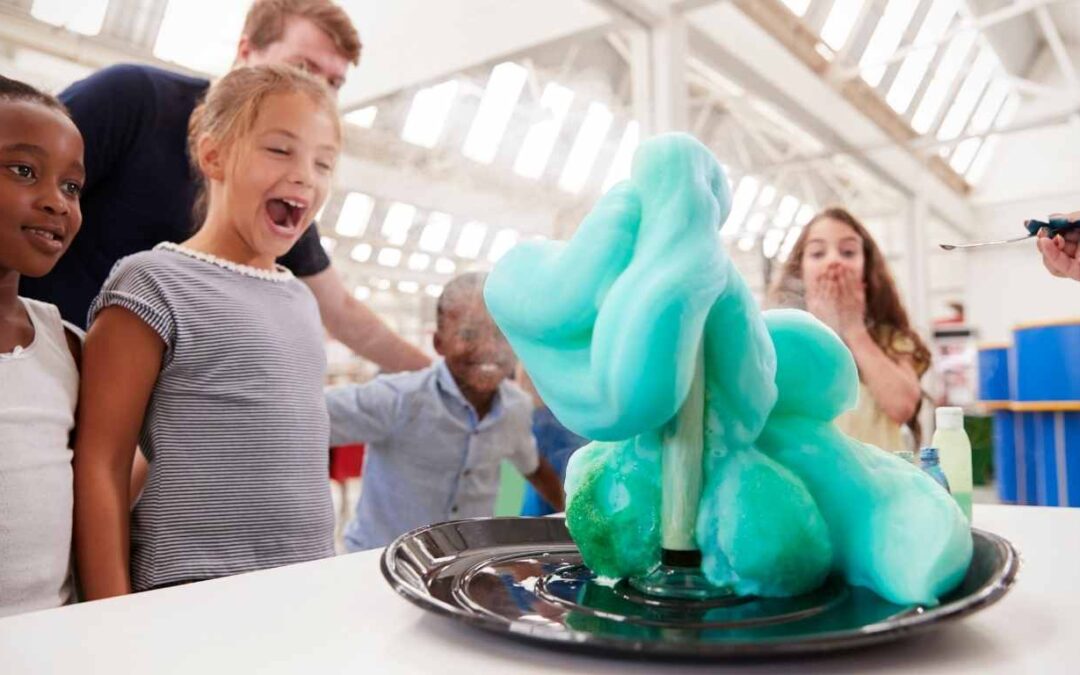The problem today: Our shrinking, expanding world
We live in a world that is getting both bigger and smaller every day. In terms of population and technological discovery and advancement, growth has been steady and astounding. At the same time, the realization of the information age has made
the world seem smaller in important ways. With seemingly limitless information—and literally billions of people—accessible online, for the first time in history, students of today join a global workforce upon graduation. Competition is no longer localized to the guy or girl next door, as outsourcing, remote workers, and even computers vie for the same jobs.
Ready or not, the workplace today is vastly more high-tech than a few generations ago. Technical and scientific literacy are more vital now than ever and will only become more so with each passing year.
Making the grade
However, many are concerned that current education systems in the US lack sufficient resources and appropriate emphasis on promoting technical literacy. Some high school graduates are finding themselves ill-prepared for technical careers or college programs that require a prerequisite grasp of math and science. Indeed, according to the US Department of Education website, only 16 percent of American high school seniors are both proficient in math and interested in a STEM career.
| Ready or not, the workplace today is vastly more high-tech than a few generations ago. |
It seems even some college graduates are poorly equipped to enter the workforce in their field of study, with the US DOE reporting that only about half of the STEM college graduates in America are working in a related career. Yet despite diminished competency in science and math, the need for qualified STEM candidates is on the rise, sharply underscoring the challenge and opportunity facing both students and educators alike.
What is STEM?
STEM is an acronym that refers to the academic disciplines of Science, Technology, Engineering, and Mathematics. It represents initiatives aimed at better preparing young people for technical careers through education that focuses on real-world application of STEM concepts. Another important goal of STEM education is ensuring the US maintains its leadership role in technology and innovation. Knowing what the acronym stands for is simple enough, but understanding what STEM really means can be less so.
One reason is that STEM means something different in different fields. A high school math teacher will hold a very different perspective from an aerospace engineer, and as a result, the two will likely have very different definitions. Still, there are really only two main circles where the term STEM is commonly discussed: education and the workforce.
According to former president Barack Obama:
“The United States led the world’s economies in the 20th century because we led the world in innovation. Today, the competition is keener; the challenge is tougher; that is why innovation is more important than ever … That’s how we will ensure a high quality of life for this generation and future generations.”
One coin, two sides
Educational STEM initiatives encompass those made by homeschool parents, co-op educators, K-12 teachers, and college professors. Its focus is usually on better-educating students and educators in STEM, particularly math and science, in order to prepare them for higher education tailored to STEM careers. President Barack Obama launched the “Educate to Innovate” campaign in 2009, in an effort to engage companies across the nation in supporting education. Since then, millions of dollars have gone toward promoting STEM nationwide. More recently, new campaigns have sprung up in attempts to develop mentors from STEM professions to instruct and inspire young students. From the educational perspective, STEM is mostly focused on making students more proficient in math and science to better prepare them for higher education. STEM is considered fundamental knowledge that needs to be put into students’ heads.
The workforce STEM perspective includes everyone from factory workers, to hospital technicians, to engineers, to medical doctors, and researchers.
The workforce focus is improving STEM literacy to better prepare high school or college graduates to jump right into the forward-thinking, fast-paced, high-tech economy of today’s industrial environment. Additionally, workforce STEM is concerned with aiding and increasing efficiency, accuracy, and discovery.
Tomorrow’s workforce needs strong problem solvers who can quickly conjure up innovative solutions to the challenges of today’s industry. Where STEM in education might focus on knowledge, STEM in the workforce demands demonstrated skill.
STEM is parked at the intersection of challenge and opportunity for tomorrow’s leaders. Despite its varying definitions, few would disagree: STEM is about forward thinking and technical literacy. STEM is about learning and learning how to learn better. STEM is about pushing limits through innovation, and it’s about solving problems every day. Ultimately, STEM is for better-equipping students today to move forward tomorrow and make the world a better place.
STEM matters
STEM is important for scientific researchers, medical doctors, engineers, technicians, mathematicians, computer programmers, software designers, biologists, chemists, and many others. Some careers that are typically dismissed as “simple manual labor” are actually important STEM careers.
For instance, metal fabrication (such as welding, sheet metalworking, machining, etc.), requires a solid understanding of math and problem-solving. A sheet metalworker needs to be able to calculate the required angle to bend a sheet of steel to account for the springiness of the material and achieve the desired shape, which requires some understanding of both geometry and physics.
As custom jobs come in at a machine shop, workers need to be able to come up with creative solutions to get the job done without wasting materials and time, which requires the ability to solve problems. Metal fabrication is merely one example of a career that isn’t science or engineering that requires extensive STEM literacy, but there are countless others.
But STEM isn’t only important to those pursuing STEM careers. Supplying clean drinking water to developing nations, exploring space for other habitable planets, and even protecting children from online predators are all STEM pursuits. Whether we realize it or not, we live in a world that is dependent upon and influenced by technology. Having a basic understanding and appreciation of this technology is important for STEM and non-STEM career holders alike.
Where does Home Science Tools fit?
Home Science Tools believes we can make the world a better place through a greater understanding and application of science. We do this by making science discovery and education fun and accessible for kids and adults. We provide the classic and cutting-edge products that implement hands-on learning, exposure to technology, integration between math and science with engineering and technology, and practical problem-solving. Our products help to foster, develop, and improve STEM literacy, plus promote an interest in STEM careers.
For homeschool parents, Home Science Tools offers the lab supplies necessary to provide a rigorous science education at home. For parents who are concerned that public school STEM instruction may be lacking, HST provides a wealth of materials for supplementing studies at home. For kids and adults interested in exploring STEM, we offer a virtual wonderland of opportunity!






